Post-Islamic State Jihad-Terror
As Islamic State (IS), or ISIS (Daesh) is continuously losing territories in Iraq and Syria and with the imminent likelihood of it’s fading into oblivion, sooner than later, the questions that haunt our society and the geo-strategic community, in particular, are: What after IS? What does the future of global Jihad look like?
In a previous article, evolution of global Jihad was outlined from the 1980’s to the rise of the so called Caliphate. Dynamics of Jihad in the early stages when nationalist and tribal sentiments dominated the Jihad was also analyzed. It was argued that in the early phase, the idea of Jihad was more or less a mobilizer, a catalyst but the deep undercurrents and objectives were largely political. In the second phase, one witnessed the rise of transnational jihadi outfits like Al Qaida which, though active since the mid-90s, made its grand entry on the world stage with the 9/11 bombings of the Twin Towers in New York. Despite the largely theological motivations, the Al Qaida (AQ) was still a political entity first and religious second. Four years later, by 2005, AQ went into a kind of hibernation mode but its diffused networks strengthened and navigated their channel across and within a diverse Muslims world. In the next stage, IS brought in the emotive concept of the Caliphate to the fore. This marked a major leap forward in the politico-religious agenda of its predecessor Jihadi entities. It was distinct and markedly different from its predecessors and parent organizations like AQ in terms of brutality, theological moorings, and most notably, in its appetite for violence over a widely disbursed geographical expanse focusing mostly on the European countries.
IS is now rapidly losing its territorial possessions, disposed of nearly 75 percent of what it had as rapidly acquired since 2014 when its leader Al Baghdadi announced the establishment of the Caliphate. AQ is cross with the IS and from the present standpoint, any kind of union between AQ and IS seems unlikely. In purely military terms, aerial bombings accompanied by swift and coordinated moves by the Iraqi/Syrian forces against IS targets have borne fruits with their prized possessions like Mosul and Raqqa, amongst others, having already been liberated. But is it an occasion for celebration for the world counter-terrorism community? Is it a resounding victory or onset of more elusive, hazy and difficult challenges?
Military reverses suffered by IS, it must be admitted, are not accompanied by the proportionate decrease in its ability to inspire. And, the effects can be seen in a totally new form of terrorism, i.e. lone-wolf attacks. The most recent incidents of London Tube bombings, Barcelona and Manchester attacks, Nice attack in France and the subway attack in Germany and more such incidents of lone-wolf terrorism, where there is no command and control structure, no hierarchy and no direct involvement of trans-national terrorist organizations, stand testimony to their ability to launch attacks within Europe and UK, almost at will., giving the impression that such lone-wolf attacks will be the future form of terrorism now and even after the IS is ‘completely’ defeated. This would make the task of counter-terror agencies even more difficult. The leaders and handlers of organizations like AQ can be arrested, their funding can be stopped, they can be made to face sanctions; IS can be routed with aerial bombings, leaders can be assassinated with drone attacks but lone- wolves cannot be easily identified and arrested until the attack has taken place. They do not operate through organized networks; hardly use any circuitous funding pathways or territorial strongholds that can be dismantled with advance actionable intelligence for pre-emptive military action. Hence, the pertinent question in front of the counter-terror policy makers is to understand the new form of leaderless jihad, i.e. lone wolf attacks, and how to stop them?
Motivational Part of Terrorism
Across the world, counter-terrorism apparatus have so far focused on the operational part that includes special operational techniques, carry out targeted drone attacks and high-profile intelligence driven operations to track the operatives and disrupt flow of money and funding sources. However, the motivational part in terrorism has not been under strong focus for various reasons ranging from as trivial as its lack of glamour characteristic of high-profile counter-terror operations to a shallow understanding of the ideological motivation and the overall processes contributing to intense levels of radicalization/indoctrination. The key to unlocking the above mentioned novelty of leaderless jihad in terrorism lies in unraveling the secrets of ideology and understanding the patterns of radicalization.
In his article, ‘ISIS Made Jihad Religious Again’, Graeme Wood, an expert voice on IS uses the expression “democratization of jihad”. The expression is dangerous, scary and dark but indicates a lot about the future of terrorism. Wood certainly uses the expression in the context of the myriad instances of lone-wolf attacks. But, it indicates a phenomenon of which lone-wolf attacks are just manifest symptoms. The phenomenon which he is pointing at, pertains to the domain of jihadi ideology resulting in what we sum up in a rather abstract manner as radicalization. The exploration of ideological dynamics becomes essential on account of developments described herein.
In 2001, AQ commanded an army of 400 and almost a decade after IS had mobilized 40,000 people to travel to Syria and Iraq to join the Caliphate. It included cadres, mostly from Muslim majority countries, but also a number of Western countries, and even from countries like Chile and Japan with relatively less Muslim inhabitants. Further, this figure does not include those individuals who could not eventually join the group because their government prevented them from going and it also does not include thousands of Jihadis active in North Africa, South Asia, and Afghanistan. The figures simply show the meteoric rise in the numbers and the diffusion of the jihadi extremism across the globe.
There could be a range of factors motivating the lay followers including the westernized, alcoholic, cocaine-snorting youth from far off lands to join IS or go on a killing spree in a crowded area using a truck or a sharp edge weapon. It could also come from their disturbed and unstable lifestyles, mental vulnerability emanating from a highly indulgent lifestyle, sense of alienation, economic deprivation and an allure for an ideology promising anchorage, and a path with a certain determination assuring salvation and redemption from the past sins. However, the lure of ideology has always remained a rather difficult-to-touch domain among the intellectuals because of the fear of being perceived as Islamophobic. As a result, one comes across persistent attempts by the leaders of the faith to deny any theological moorings of Islamic extremism, in general.
Religion First-Politics Second
Until recently, Obama administration’s dubious efforts at nomenclature like “violent extremism” are the blatant examples of how we are sitting with our eyes closed and letting the baby monster become a giant. No doubt, factors like bad governance, shifting social mores, civil wars, failed states, corruption etc. have played a major role in the rise of violent Islamic extremism but focusing on the role of above mentioned factors to the exclusion of ideology smacks of duplicity and hidden or naïve political approach. However, after the rise of IS, it would be a sheer tom-foolery for any counter-terror analyst to play down the role of ideology. For any future policy analysis, it becomes essential to understand the unique brand of ideology that IS presents and the way it inspires the youth.
Terror outfits like AQ, Jaish-e-Muhammed (JeM) and Lashkar-e-Toiba (LeT) had political projects like withdrawal of American troops from the Middle East, Afghanistan, end of Israel and freedom for Kashmir etc., but IS represents a phenomenon which is primarily driven by religious under-pinning. Graeme Wood says that former counter-terror analysts like Ali Soufan ignore in their understanding of the differences between IS and its predecessor AQ, is the former’s emphasis on Islamic theology and law. He writes in Foreign Affairs, “IS has made religious questions the core of its mission. It enforces orthodoxy on topics such as who qualifies as a Muslim, whether Muslims may live in non-Muslim lands, how an Islamic State should administer itself, and when Muslims should overthrow their leaders. Al Qaeda was political first, religious second; it was conspiratorial—an exclusive club of operatives—and practical. ISIS is religious first and political second; it is public, non-exclusive, and religiously uncompromising”.
The notion of Takfirii.e. apostasy is very dangerous in Islam. The Prophet had said that if an accuser of apostasy is wrong, then he himself becomes an apostate. The punishment for apostasy is death. The break-away leader of AQ, Zarqawi, the chief intellectual architect of IS widened the definition of apostasy by including activities like selling alcohol or drugs, wearing western dresses or shaving one’s beard, voting in an election or standing in an election and being lax or reluctant about calling other people apostates. Shi’ism is considered a departure from the original teachings of Quran which implies rejecting the sanctity of the Quran in its original form. Shiite practices like worshipping the graves of Pirs and self-flagellation etc. are rejected as having no basis in Quran. As a result, 200 million Shias of the world are apostates and marked for death as a punishment.
IS wants to bring back the most original and authentic 7th-century legal system of Islam and ultimately bring an apocalypse. Sheikh Abu Muhammad al-Adnani, IS’s chief spokesperson, had called on the Muslims in western countries such as France and Canada to identify an infidel and “smash his head with a rock”, poison him, run him over with a car, or “destroy his crops”. While uttering this language, Adnani gave theological and legal justifications and it echoed what Prophet had said that if the Muslims are in the land of infidels, then they should be unmerciful, and poison away. Further, he said , “we will conquer your Rome, break your crosses, and enslave your women”. IS gives religious justifications for slavery, selling of women and crucifixion and it is a fact that in the early wars of Prophet, he did resort to the aforementioned tactics.
Further, it presents a distinctive variety of Islam that believes in the Day of Judgment and apocalypse as a matter of its strategy. This can be seen in the fact of IS giving huge importance to Dabiq (a place mentioned in Quran where Islamic armies will defeat the armies of Rome). Virtually every decision and law promulgated by IS confirms to “Prophetic methodology” which means following the prophecy and example of Muhammad in punctilious detail. Musa Carantonio, the IS sympathizer based in Australia told Graeme Wood, National Correspondent, The Atlantic, that once a Caliphate is declared, it becomes a religious duty for all Muslims to migrate to the Caliphate. If a Muslim does not pledge allegiance i.e. baya’a to Caliphate, he or she dies a death of Jahil (ignorant, therefore a death of disbelief. Hopefully, this explains such a large number of foreign fighters joining IS. The Caliph is required to implement Sharia otherwise he will fall into sin. Caliphate has to be continually at war with non-Muslim states. It can’t have permanent treaties and it has to launch Jihad at least once a year against all the non-Muslim lands. It can’t have permanent peace treaties. It can’t send ambassadors to UN and other multilateral bodies because it implies recognizing the man-made law over the law of God and hence, becomes a case for apostasy. Voting, elections and representative governments are forbidden in Caliphate. By this measure, movements like Taliban and Muslim Brotherhood also do not qualify to be Islamic as they have given in to the blandishments of democracy by recognizing elected governments and international bodies. The modern Westphalian international system based on nation-states is not at all compatible with the idea of Caliphate.
Princeton Scholar, Bernard Haykel, a leading scholar on IS’s theology opines that the ranks of IS are deeply infused with religious passion. Koranic quotations are ubiquitous. He regards the claim that IS has distorted the texts of Islam as preposterous, sustainable only through willful ignorance. Leaders of Islamic State have taken the emulation of Muhammad as their strict duty and have brought to life those traditions which have been lying dormant for centuries. With the Caliphate, the ghosts of the past have come back to haunt us. It becomes a duty of a Caliph to implement Sharia and bring back the centuries old legal system with all its brutality and to ensure that it becomes a communal obligation of the Ummah (Muslim community). Without a Caliphate, many of the practices are not legitimate, for example, individual vigilantes are not obliged to amputate the hands of thieves. But, once a Caliphate is in place, this law along with a large body of Islamic jurisprudence becomes active and to not implement it or disobey it is a shirk.
Radicalism and Caliphate
The stock of ISIS is its literalism and the seriousness with which they read and follow the religious texts. This makes them the most authentic throwbacks to the Islamic world of the 7th century and coming up with strong theological justifications, it becomes difficult to counter the ideological narrative that they present to the Muslims. However, the vast majority of Muslims have not pledged any allegiance to IS and have rejected the IS as a false representative of Islamic values. Muslims can say that slavery is not legitimate now, and crucifixion is not justified at this juncture. But they can’t condemn slavery or crucifixion outright without contradicting the Koranic injunctions and the example of the prophet. And, if they take a position that certain core teachings of Koran are not valid now, it will be an act of apostasy in the world of IS. Hence, such a literal interpretation of texts may hold a unique charm for some of the passionate enthusiasts of the religion, but for the balanced and rational minded, it becomes difficult to present a coherent counter-narrative without contravening the core texts. Further, the notions of the apocalyptic bloodbath and the mythological notions of the end of the world, hold a special attraction for psychopaths, perverts and mentally vulnerable looking for the immediate redemption of sins.
The Caliphate is not something coming out of a vacuum. It is a result of a process of which Wahhabism, Salafism, Deobandism etc. are nothing but different stages. Wahhabism, an 18th century movement, is strikingly similar to IS in its literal interpretation of texts except for the fact that it is not wanton in violence and destruction. Similarly, the Salafis which offer a hardline alternative to IS, are just as uncompromising as IS. They are committed to expanding Dar-ul-Harb with the implementation of brutal practices like amputation of limbs and slavery-but at some future point in time. Their first priority is of self-purification and religious observance and they believe that Salafis must stay away from politics and must not disrupt governments as chaos creates hurdles in the goals of self-purification. Similarly, Deobandi cadres in India are strictly against worshipping Pirs and tombs and they strictly implement the Sharia in the matters of dress, worship, and hygiene. Hence, the above-mentioned ideologies may not be violent but they fire the forces of radicalization in a vigorous manner which majorly helps in creating foot soldiers of Jihad, including the lone-wolf attackers. Graeme Wood calls such ideologies like Salafism, “the pre-terrorists” among us. And, it is evident from the long process of radicalization which went unnoticed in places like Kosovo, Catalonia, and Pakistan, and which hailed Bill Clinton as a liberator (of Kosovo) in 1999 has become a major supplier of foreign fighters to IS. Since 2000, Kosovo witnessed the intense wave of Wahhabi radicalization sponsored by petrodollars. Similarly, the background to the recent Barcelona attack was also the strong wave of Wahabbi radicalization in Catalonia. The decades of radicalization since Zia-ul-Haq’s regime in Pakistan needs least elaboration. Today, in Pakistan the foot soldiers of Lashkar and Jaish are sympathetic towards IS ideology, it could ruin the fortunes of the established sub-contractors of Jihad like Hafiz Sayeed.
All the above-mentioned ideological streams ultimately lead to the caliphate and apocalyptic bloodbaths. The IS might have lost the territory but has presented the idea that Caliphate is a doable project; it is something that can be attained and must be attained. Baghdadi clearly stated that Caliphate is a communal obligation, “This is a duty upon the Muslims - a duty that has been lost for centuries……..The Muslims sin by losing it, and they must always seek to establish it”. Hence, even after the territorial demise of IS, it will continue to stay as a powerful ideology and inspire the future Jihadist. It is likely that in future another Caliphate may remain a distant dream but through its symbolic and religious value- it will sustain itself and will be the main driving force behind the leaderless jihad, creating a fertile ground for lone-wolf attacks.
Future of Conter-Terrorism
Accordingly, in the future, the task of counter-terrorism establishments will become multi-dimensional, nuanced and more complicated on account of the ideology acting as a major weapon and democratizing the jihad. Policy analysts and agents working on counter-terrorism need to understand the dynamics of ideology and the patterns of radicalization. The internal and personal life journeys of young men and women joining terror outfits or indulging in lone-wolf attacks can tell more about the next possible attack and how the process of radicalization works. The understanding of the ideology can also help us in predicting behavior. For example, an IS like the organization is, in principle, against any kind of peace or reconciliation. Its online propaganda material and the nature of internet radicalization can tell us a lot about its strategy on Jihad and how it will channel its energies and schemes in the future. In the process of radicalization, there will always be a peer group and friendly network which will work as a driving force in getting the recruits. And, such networks will be loosely controlled by the individuals and groups that have vague and blurry connections with transnational organizations. Hence, if the intelligence community has a good penetration in the society and the effective mechanism to track the behavior of suspicious individuals, a big menace can be nipped in the bud itself.
Further, the leaderless jihad is not just a random fight. It is a well-planned strategy. AQ’s document Future Works presented this model in 2009 which stated that jihadist trained in Afghanistan and Central Asia will go back to their homes in Europe and stage crude, low-level attacks which will lend a cover to the large-scale and sophisticated attacks by the transnational terrorist organizations. IS’ Virtual Plotter model is an innovation to what AQ recommended in ‘Future Works’. The ‘virtual plotter’ does not need to be trained in Afghanistan or any other country. They are radicalized and trained in the terrorist tradecraft on the net. And, they are urged to stage low-level crude attacks using whatever weapon that comes their way. Hence, in future security agencies will have to engage in twin-front warfare - on the one hand, deal with the radicalization process to prevent low-level attacks, and on the other hand, tackle high level espionage and security operations to foil large-scale sophisticated attacks.
In India, we have been highly effective in tackling the operative part of terrorism through sound intelligence, busting of terror-financing networks, and effective combat missions. But, we have been very neglectful in dealing with radicalization issues. So far there is no systematic study of the burgeoning Deobandi and Wahhabi radicalization across the country. It is visible in the form of hundreds of Wahhabi and Deobandi mosques mushrooming across the length and breadth of the country, loaded with foreign money. Deobandi and Wahhabi preachers have penetrated remote areas of the country and this phenomenon seems to have largely gone unnoticed. There are visible changes in the dress patterns. Even in small cities one can see females increasingly wearing Burqas and Hijabs. The culture of small town composite and communal harmony has prevailed at large. Muslims largely followed Sufi practices. It was rare to find women in Burqa. In villages, there are local deities which until recently have been jointly worshipped by Hindus and Muslims. But, lately one can witness the burgeoning Deobandi madrasas and strict implementation of Sharia and other religious injunctions in the matter of dress, behavior, social intermingling and dining. It can be seen in behavioral changes of school students who exhibit early symptoms of religious rigidity and make communal demands like special timings for prayers, long vacations for religious festivals etc. Recently it is nonplussing to see huge protest demanding shelter and protection for Rohingya refugees! At this stage, mental associations with the global Jihad are evolving and so it is the right time to nip them in the bud.
Given the above-mentioned state of affairs, a question arises whether we have sufficient intellectual and material infrastructure to address the growing challenges of radicalization. The prevailing view is that conditions are pathetic at the cutting edge, i.e. at the district level where the administrative, enforcement and security officials do not generally know the differences between Wahhabi, Deobandi, and Barelvi schools of thoughts! Their basic awareness of terrorism issues is very poor. The state intelligence agencies are in a bad shape. They are under-staffed, poorly equipped, and short on the state-of-the-art technology, theoretical understanding, and skills needed to do the job. Though we have been at the receiving end of terrorism for decades, still, one hardly finds a center in any of the Indian University dedicated to the systematic study of terrorism and its diverse aspects. Whereas in the West, after 9/11 intense research work on terrorism has been undertaken by Universities, think tanks and governments.
Further, our public intellectuals, media, and academicians have not acted with honesty in opinion-making about the terrorism-related issues. They view any serious attempt to study terrorism from the lens of communalism. And through their distorted understanding of secularism, they have quite successfully thrown all the serious attempts to study the phenomenon of terrorism into the junkyard of binaries like secularism and communalism. Serious issues threatening national security are projected as attacks on the human and fundamental rights of the minority community, and the question of national security ultimately ends up as a joke. For instance, before the National Investigation Agency (NIA) investigations on all aspects of terrorism related incidents started in earnest in J&K, there was hardly any systematic analysis of the Inter Services Intelligence (ISI) funding of the public unrest and the entire issue was portrayed as an example of state brutality against the so-called ‘innocent’ protestors.
Terrorism is too serious a matter to be left to inadequately informed journalists and fancy social workers. It is a domain of experts. Lay media persons or intellectuals with the superficial understanding of the subject matter must refrain from vitiating the environment and jeopardizing the national security by shielding or empathizing with terrorism and terrorists in the name of secularism and human rights, for petty political considerations and monetary rewards. It is absolutely baffling to see journalists, strategic analysts and intellectuals crying in defense of terrorists like Yakub Memon and Ishrat Jahan.
Gearing Up to Defeat Terrorism
Hence, in the first place, we need to develop a nuanced understanding of terrorism. It, in itself, is a wide-ranging topic. Its different aspects like nature, causes, methodology, propaganda, psychological warfare, suicide terrorism, radicalization etc. must be studied and analyzed in depth. For this, we need academic centers on the lines of Stimson Center, International Center for Terrorism (Belgium) etc., dedicated to research and analysis in the field of terrorism. The outcomes of such research projects must go into policymaking. Such research centers should function with the ideas of convergence of academic/theoretical experts, sociologists, field operatives, intelligence experts and the experts from the field of the Non-Government Organisation (NGO) sector. The cross-fertilization of ideas will enable us to develop a nuanced understanding of the phenomenon of radicalization in general and in the Indian context in particular.
Secondly, the patterns of radicalization need to be studied in detail for future counter-terrorism work. One must keep a strict surveillance on radicalizing networks, peer groups and institutions by tracking their activities in the society, gatherings and their activities on the social media. These days, encryption technology and social media play a major role in providing online access to radicalizing materials and literature. The diffused and shadowy radicalizing networks also function through social media. Hence, we need social media experts who are alert and conscious of radicalizing undercurrents.
Thirdly, intelligence set-up at the ground level needs to be beefed up. State intelligence machinery needs a complete overhaul in terms of technology, skills, motivation and work culture. Currently, they are seen as side postings, engaging officers in a mundane and un-inspiring desk jobs. As a result, there is no motivation to work. Intelligence work needs special aptitude, interests, intuition, and skills. Therefore, people who are cut out for such jobs should only be given such assignments. Theoretical training for the officers in the concepts of Takfiri, Jihad, Salafism, Wahhabism etc. will enable them to develop a mature understanding of grassroots level radicalization trends and patterns. Outreach programs with the moderate and rational individuals will help in generating goodwill and will provide timely intelligence.
Fourthly, civil society can play a greater role in de-radicalization initiatives and rehabilitation of the radicalized youth by engaging in education-related activities, skill, and entrepreneurship development programs.
Fifthly, a counter-narrative to the extremist ideologies must be presented. In this, the Islamic religious scholars should come forward and explain the meanings of Koranic concepts like Jihad and Takfiri in the right context. They must be encouraged to publicly reject the extremist and literal interpretations. In India’s case, we have a tradition of liberal and tolerant Sufi strain of Islam. Sufi and other liberal traditions of Islam must be supported to check the onslaught of extremist narratives like Deobandi School and foreign ideologies like Salafism and Wahhabism. Unless we concentrate on developing a genuine and strong counter-narrative to extremist ideologies, the field would remain wide open for the extremists for the soul harvesting or rather blood harvesting.
It must, however, be mentioned here that in doing all these, the role of the governmental machinery must remain that of enablers and facilitators without treading into the sensitive area of religious domain. That could be highly counter-productive and invite genuine concerns of interference in personal religious beliefs and practices of individual citizens.
Bibliography
1) Pandya, Abhinav, “Deconstruction of Islamic Extremism Over the Last Two Decades”, Indian Defense Review, Mar, 2016.
2) Wood, Greame, “What ISIS Really Wants?”, The Atlantic.
3) Wood, Greame, “True believers-ISIS made Jihad Religious Again”, Foreign Affairs.
4) Ganor, Boaz, ‘A New Counter-Terrorism Doctrine for President Trump”, International Institute for Counter-terrorism.
5) Barr, Nathaniel, “ISIS’ Blueprint-The Second Life for Al-Qaida Proposal”, Foreign Affairs.
6) Nanjappa, Vicky, “How Saudis Funded Rs. 1700 crores for Wahhabis in India ?”, One India.
7) Srivastava, Khyati, “ Spread of Fundamentalist Islam in Rajasthan-Are we Missing the Trap?”, India Facts.
(The author is a public relations, economics and policy consultant. He is also a free-lance journalist)
(Views expressed are of the author and do not necessarily reflect the views of the VIF)
Image Source: http://www.newsweek.com/coalition-has-failed-combat-uk-radicalisation-says-former-clegg-advisor-298664

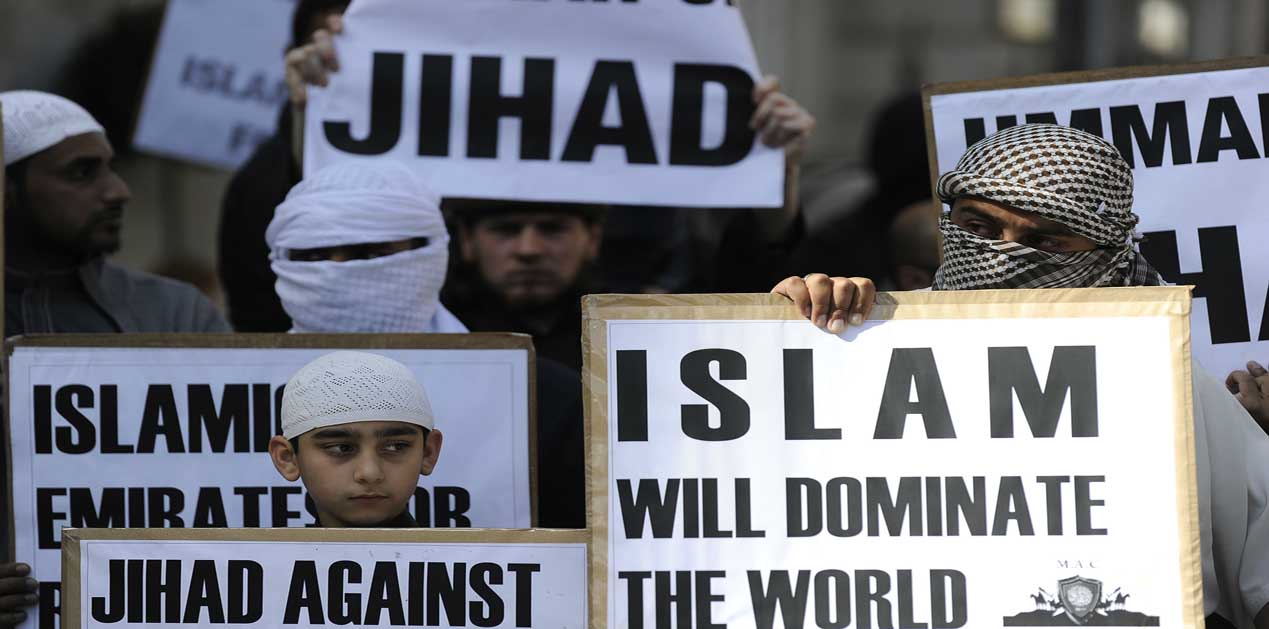



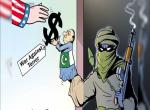
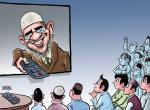


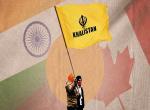
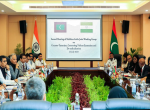
Post new comment